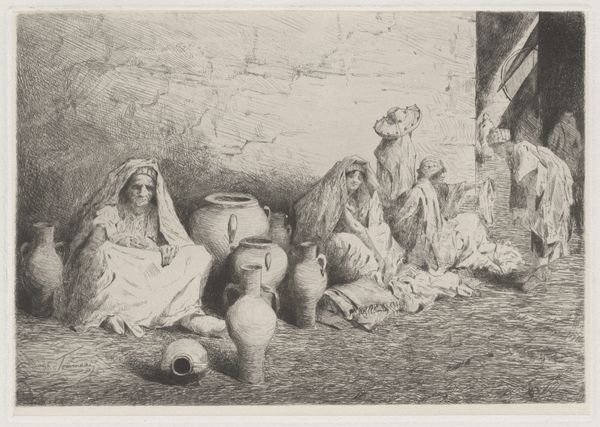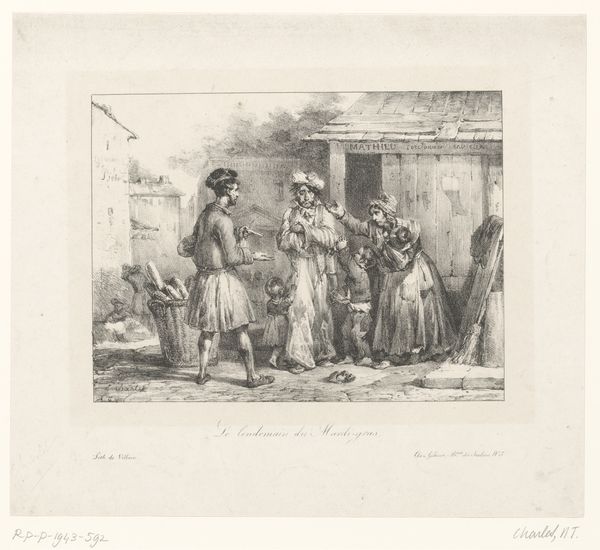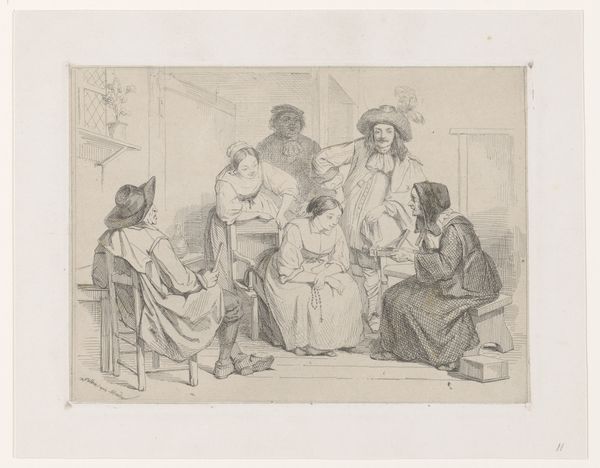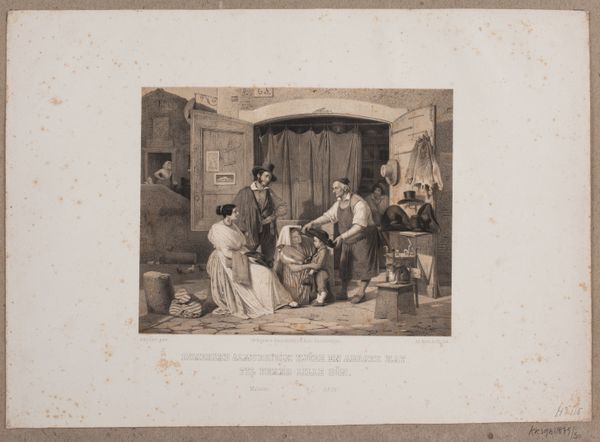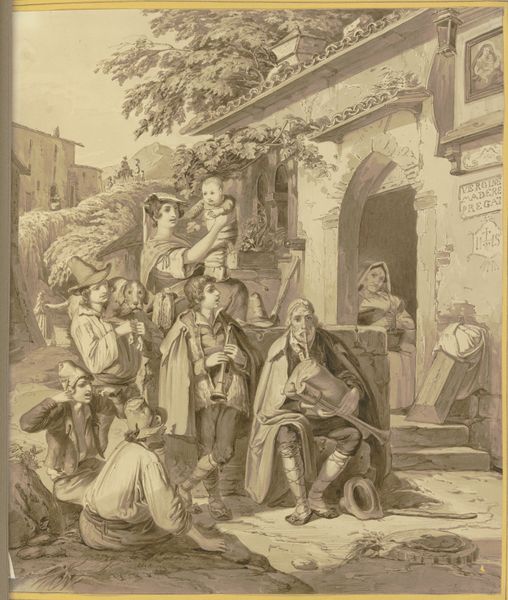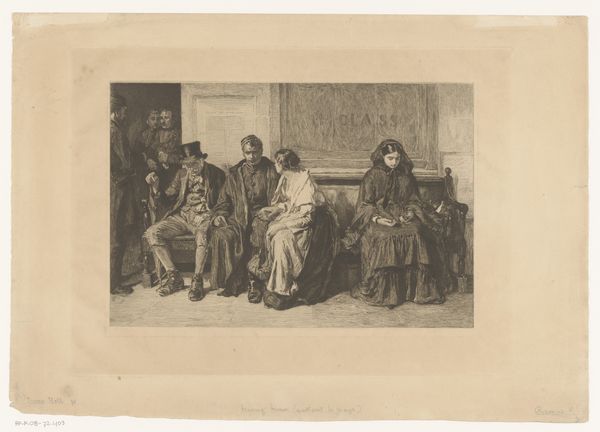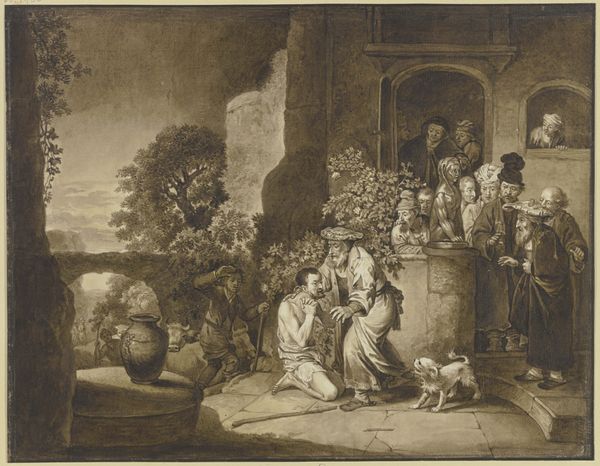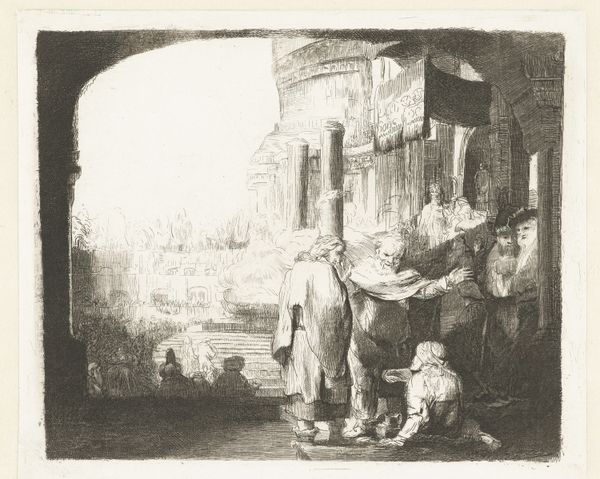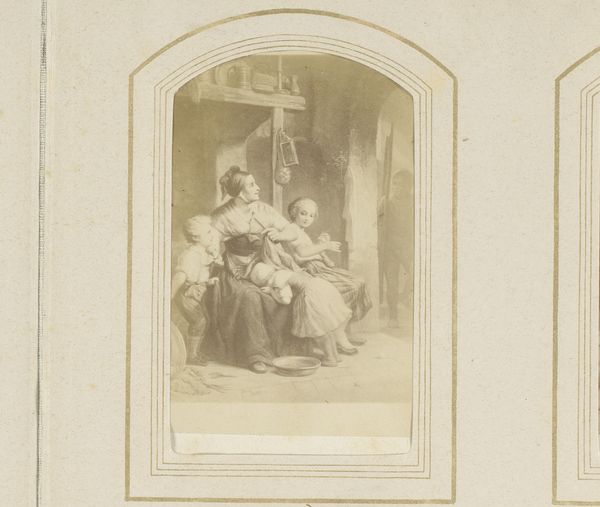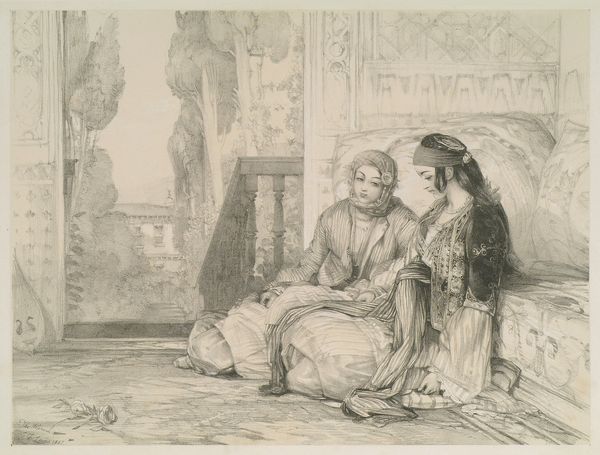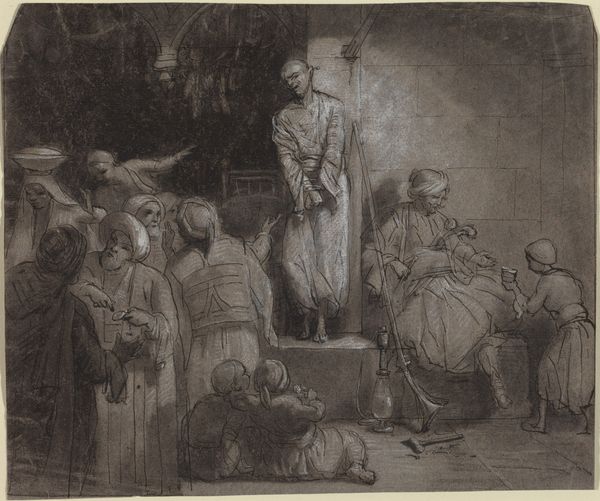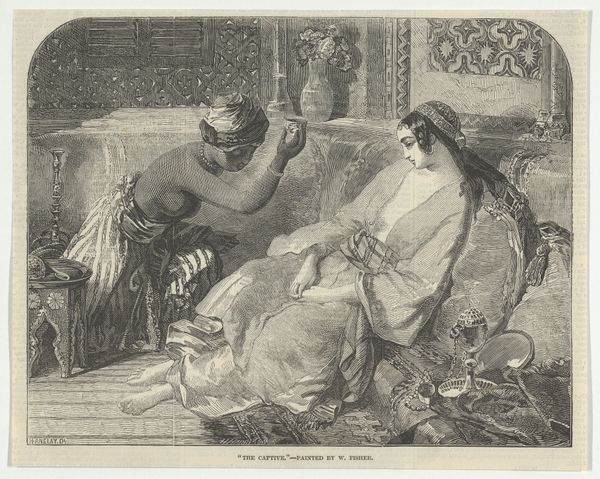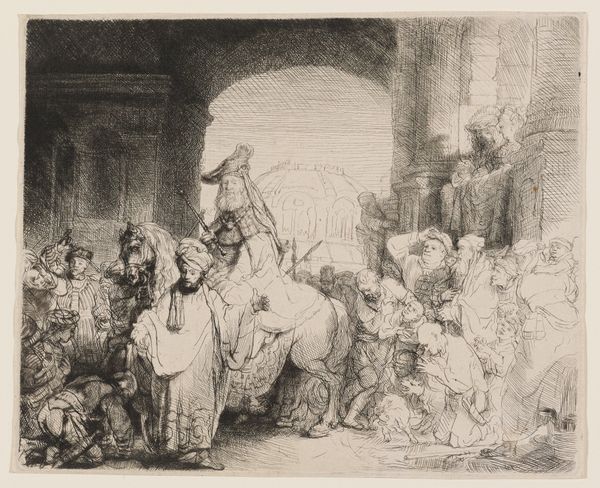
Soldier's Courtship (from The Life and Death of a Soldier) 1781
0:00
0:00
Dimensions: Plate: 15 7/16 x 17 1/2 in. (39.2 x 44.5 cm) Sheet: 15 9/16 x 17 5/8 in. (39.5 x 44.8 cm)
Copyright: Public Domain
Robert Blyth created this print, "Soldier's Courtship," around 1780, using etching and engraving techniques. These processes involve meticulously scratching lines into a metal plate, which is then inked and pressed onto paper. Notice the stark contrast and fine details achieved through this method. The plate is made of copper, a relatively soft metal that allows for intricate lines and shading, perfect for capturing the scene's nuanced emotions and textures. The tools and techniques employed here connect directly to the broader history of printmaking, a craft deeply intertwined with the rise of mass communication and visual culture. The lines were produced by hand, requiring extreme care and specialized labor. Understanding the material and process gives us insight into the cultural context of the artwork. Printmaking was a means of disseminating images and ideas, making art accessible to a wider audience beyond the elite circles of painting and sculpture. The image, a comment on the life of a soldier, speaks to the societal role of the military man, his vulnerability, and the human experiences that connect him to everyday life, challenging the traditional distinctions between high art and social commentary.
Comments
No comments
Be the first to comment and join the conversation on the ultimate creative platform.
